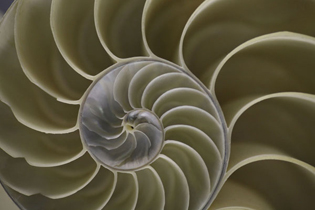BIOMIMICRY - INSPIRED BY NATURE
22 Jul 2015
Biomimicry is about imitating nature and looking at how nature works to find sustainable answers to human challenges. But how can it benefit our built environment?

We’ve always looked to the natural world for inspiration, whether that’s the curve of a shell reflected in the Sydney Opera House or a leaf pattern etched into a Corinthian column.




However, as we seek sustainable solutions to complex design problems, architects and engineers are increasingly looking beyond the beauty of nature to designs that have benefited from a 3.8 billion year testing period.
Biophilia literally means “love of living things,” and biophilic design principles incorporate elements essential for life – fresh air, sunlight and water – into the built form. The benefits of biophilic design have accelerated its adoption in recent years.
While biophilia integrates nature into design, biomimicry is about imitating nature and looking at how nature works to find sustainable answers to human challenges. It recognises that plants, animals and ecosystems have been engaged in a constant cycle of symbiosis and systemic refinement for billions of years, and that the environment has already solved many of the design conundrums we face.
Biomimetic opportunities abound in our vast, diverse and unique landscape, but making them work for the built environment can be a complex mix of art and science. Speaking at Green Cities 2015 in Melbourne in March, architect and biomimicry proponent Michael Pawlyn argued that “biomimicry is not about slavishly imitating nature, but about looking at how things work in nature, and developing new solutions.”
He points out that the natural world is built on foundations of balance and renewal, and the fact that a design idea comes from nature is no guarantee of its sustainability or workability in practice.
Biomimetic solutions must not be delivered in isolation, but accompanied by a holistic and multi-faceted approach to sustainable operations and occupant behaviour. Biomimicry is not about single solutions, it’s about systemic ones.
There are, however, many great examples of biomimicry done right. The Al Bahar Towers in Abu Dhabi is one such example. The tower has an outer structure that opens and closes like the petals of a flower, closing in the heat of the day to reduce solar gain and glare, and opening up as the desert air cools.
Despite the challenges, the momentum behind biomimicry is building in Australia. Green Star supports a ‘cradle-to-cradle’ approach to building design, construction and management through credits that reward full lifecycle assessments, recycling of waste, and buildings that are carbon and water neutral.
When it comes to our natural resources, Australia is a land of great excess and of epic privation. We have sun and wind to spare, but water is often scarce and Australia regularly faces the extremes of drought, cyclone, flood and fire.
The built environment has countless problems to solve, but if we embrace the opportunities that exist to investigate and emulate our unique environment we might just find the answers.

MORE NEWS

THE GREEN LUNG OF JINGYUE

DESIGN UNVEILED FOR CITY-SHAPING SPORTS PRECINCT ON THE SUNSHINE COAST

FLEETWOOD URBAN REBRANDS AS FORGE

TAILORED RETRACTABLE SHADE FOR MODERN OUTDOOR LIVING

RECYCLED SAND CREATED FROM SOLAR PANELS TRIALLED IN NORTH EAST LINK PROJECT

